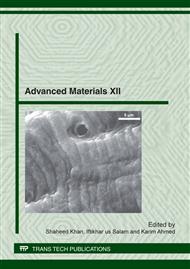p.527
p.532
p.540
p.547
p.554
p.560
p.569
p.577
p.585
Influence of Degree of Deformation on Anisotropy in Mechanical Properties in Wrought Magnesium Alloy ZK60
Abstract:
A direct-chill (DC) cast magnesium alloys ZK60 has been forward-extruded at 300 °C in a single pass at two extrusion ratios (ER) 12 and 44, which correspond to a total degree of deformation (φ) of 2.5 and 3.8, respectively. The as-extruded microstructure in both cases consists of two colonies of grain sizes, i.e. about 15 µm and <5 µm, and highly deformed original grains which have not recrystallized. The crystallographic texture at both extrusion ratios consists of a predominant component accompanied by a relatively weaker component in the extrusion direction. Although, the qualitative crystallographic texture at both extrusion ratios remains fairly similar, a higher extrusion ratio gives a relatively weaker basal texture. A relatively higher degree of DRX and much lesser volume fraction of coarse grains (>25 µm) at higher extrusion ratios give significantly weaker strength differential effect (difference in tensile yield stress and compressive yield stress).
Info:
Periodical:
Pages:
554-559
Citation:
Online since:
May 2012
Authors:
Keywords:
Price:
Сopyright:
© 2012 Trans Tech Publications Ltd. All Rights Reserved
Share:
Citation:


